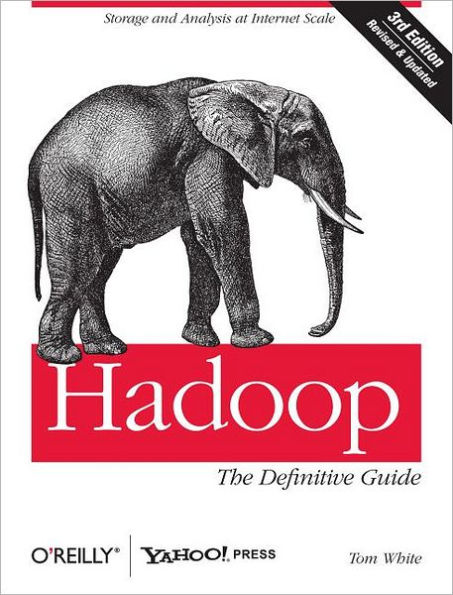Hadoop: The Definitive Guide
Ready to unlock the power of your data? With this comprehensive guide, you’ll learn how to build and maintain reliable, scalable, distributed systems with Apache Hadoop. This book is ideal for programmers looking to analyze datasets of any size, and for administrators who want to set up and run Hadoop clusters.
"1015558328"
You’ll find illuminating case studies that demonstrate how Hadoop is used to solve specific problems. This third edition covers recent changes to Hadoop, including material on the new MapReduce API, as well as MapReduce 2 and its more flexible execution model (YARN).
- Store large datasets with the Hadoop Distributed File System (HDFS)
- Run distributed computations with MapReduce
- Use Hadoop’s data and I/O building blocks for compression, data integrity, serialization (including Avro), and persistence
- Discover common pitfalls and advanced features for writing real-world MapReduce programs
- Design, build, and administer a dedicated Hadoop cluster—or run Hadoop in the cloud
- Load data from relational databases into HDFS, using Sqoop
- Perform large-scale data processing with the Pig query language
- Analyze datasets with Hive, Hadoop’s data warehousing system
- Take advantage of HBase for structured and semi-structured data, and ZooKeeper for building distributed systems
Hadoop: The Definitive Guide
Ready to unlock the power of your data? With this comprehensive guide, you’ll learn how to build and maintain reliable, scalable, distributed systems with Apache Hadoop. This book is ideal for programmers looking to analyze datasets of any size, and for administrators who want to set up and run Hadoop clusters.
You’ll find illuminating case studies that demonstrate how Hadoop is used to solve specific problems. This third edition covers recent changes to Hadoop, including material on the new MapReduce API, as well as MapReduce 2 and its more flexible execution model (YARN).
- Store large datasets with the Hadoop Distributed File System (HDFS)
- Run distributed computations with MapReduce
- Use Hadoop’s data and I/O building blocks for compression, data integrity, serialization (including Avro), and persistence
- Discover common pitfalls and advanced features for writing real-world MapReduce programs
- Design, build, and administer a dedicated Hadoop cluster—or run Hadoop in the cloud
- Load data from relational databases into HDFS, using Sqoop
- Perform large-scale data processing with the Pig query language
- Analyze datasets with Hive, Hadoop’s data warehousing system
- Take advantage of HBase for structured and semi-structured data, and ZooKeeper for building distributed systems
49.99
Out Of Stock
5
1

Hadoop: The Definitive Guide
688
Hadoop: The Definitive Guide
688Paperback(Third Edition)
$49.99
Related collections and offers
49.99
Out Of Stock

Product Details
| ISBN-13: | 9781449311520 |
|---|---|
| Publisher: | O'Reilly Media, Incorporated |
| Publication date: | 05/29/2012 |
| Edition description: | Third Edition |
| Pages: | 688 |
| Product dimensions: | 7.00(w) x 9.20(h) x 1.40(d) |
About the Author
From the B&N Reads Blog
